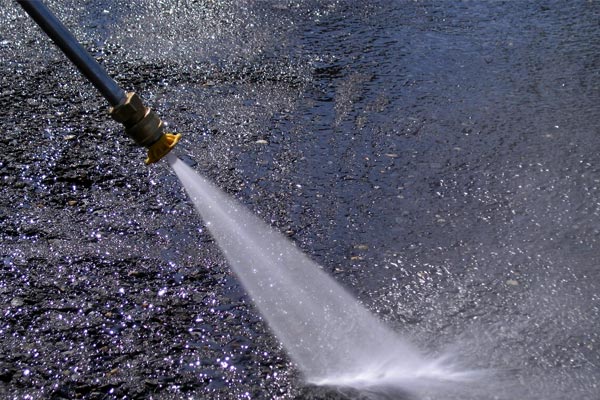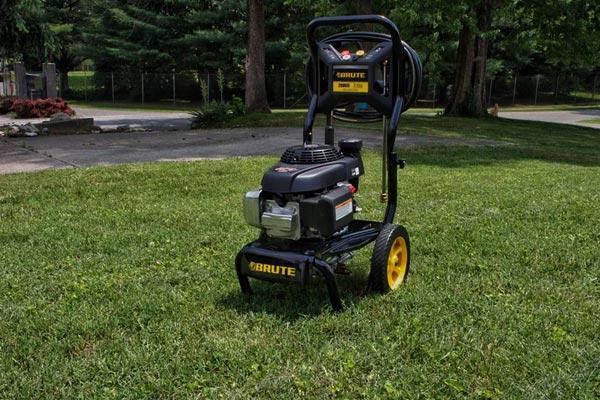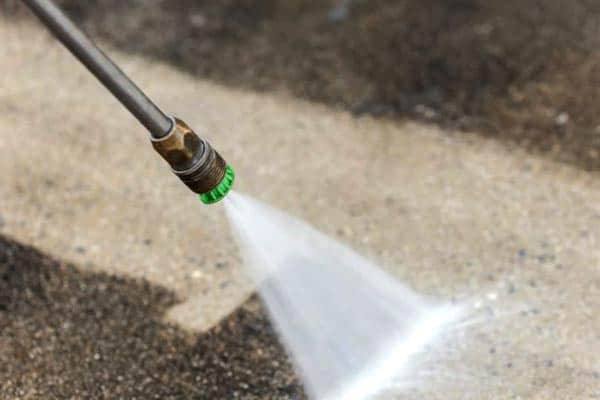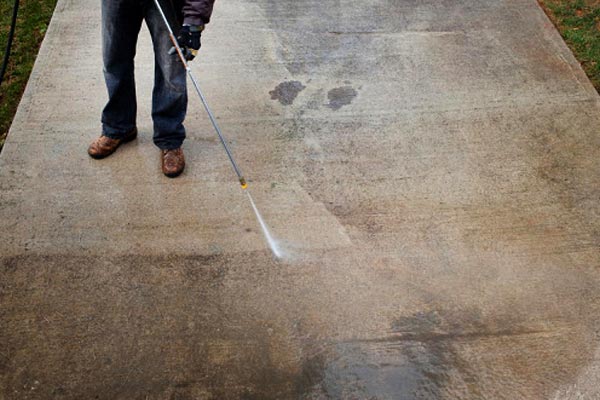What is the Average Lifespan of Different Pressure Washer Pumps?
The pump is the most essential part of your pressure washer, but it’s also one of the first things that will fail on the machine.
Since it’s arguably one of the hardest working parts of your pressure washer, it makes sense that it goes through a huge amount of wear and tear from repeated use, even if it comes with high-quality parts and a build that is supposed to last.
However, there are things you can do to protect your pump and get as much life out of it as possible.
On average, your standard pressure washer pump will last between 60 and 100 hours of use, but this depends on several different factors.
The material quality, how much pressure you’re using to accomplish your projects, and how well you care for your pump or take preventative measures to stop damage all play into your pump’s lifespan. Some will last much longer, but some can also fail and need replacement sooner.
This is why you have to be sure to take a look at the pump you’re getting with your pressure washer when you shop. A professional-grade triplex plunger pump can last over four times longer than a swashplate or axial cam pump, but they have a much higher price tag upfront.
However, it can be worth it if you plan on using your pressure washer a lot and putting the pump through a lot of wear and tear.
If you’re planning on using it a few times a year, you can get away with a lower-grade pump, and we’re going to go in-depth on each type below so you can see which one will work best for you.
The Three Different Types of Pressure Washer Pumps
Manufacturers put their pressure washer pumps into one of three categories, and the category they get placed into depends on how durable they are. You’ll get an entry-level wobble plate pump, intermediate swash plate or axial plate pump, or a professional-grade triplex plunger pump.
The price to purchase the pump and the maintenance fees go up as the quality goes up, so this is something to keep in mind too.
Entry-Level: Wobble Plate Pump
The first pressure washer pump on the list is a very basic one that has a wobble plate that connects to the driveshaft to make the pistons move back and forth.
This will create suction before pushing the water out, and each piston comes equipped with a large spring that lets the wobble plate push directly against them.
However, this makes the pump roughly 70% efficient because it has to push against both the springs and the water to operate, and this leads to a lot of wear and tear.
This pump type also isn’t economical to repair if it breaks down due to the sheer number of intricate parts and tight spaces it has, and many of them get sealed before they leave the factory.
You’ll find these pumps usually in cheaper electric pressure washer models, and they’re not replaceable. So, when they break down, you’ll have to replace your entire machine instead of just the part.
Generally speaking, this type of pressure washer pump only has a usage rating of around 300 hours, but you’ll typically only pay around $150 for the entire unit. Some of the more expensive units come in at around $300, but you get the same usage hour estimate before the pump fails.
Specifications
- Common Uses Common in pressure washers with a 2,500 PSI rating or lower with a low flow rate of two GPM maximum.
- Pros: They’re self-priming, have no seals moving back and forth with the pistons, able to produce high pressures, and they can run dry.
- Cons: There are many moving parts that can fail, can’t repair it economically, and it’s not as efficient as other models.
Intermediate Level: Swashplate or Axial Cam Pump
The next step up for your pressure washer pump is the intermediate level, and it has several advantages over the entry-level model like a higher GPM and PSI rating.
This pump type operates like the wobble pump does, but it is slightly different as you get pistons that rotate around the swashplate.
The swashplate gets set at an angle that makes the piston’s stroke as they move from one side to suck up your water and to the other side to push it out.
Operating like this lets you have bigger bearings and a bigger oil reservoir, and this can extend your pump’s lifespan. It also rotates on the same axis as your pressure washer’s driveshaft.
Swashplate or axial cam pumps have a lifespan of 500 to 800 hours, and this is roughly two or three times the average lifespan of the wobble plate pump. This pump comes installed in most budget-friendly pressure washers that run on gas.
Even though this is an excellent option when you consider residential use, they won’t survive long in commercial settings due to heavy usage. Also, since they run at a higher speed, they have more trouble cooling down with extended use.
Specifications
- Common Uses: This pump typically goes in pressure washers that have a maximum PSI rating of 3,500 or lower.
- Pros: These machines are usually compact, small, and lightweight, with a longer lifespan than a wobble pump and more efficiency. They’re self-priming, and you can adjust the flow by changing your swash plate’s angle.
- Cons: The pump runs at a higher speed due to the higher engine speed, and this makes it difficult to cool it down. It has a cylinder seal on the piston head that moves every time the piston moves to lead to a lot of wear and tear, and the rotating mass on this pump can cause vibrations unless you balance it.
Professional-Grade: Triplex Plunger Pump
When you reach this level for your pressure washer pump, they allow for extremely high pressure with minimal wear and tear, and you can run them for thousands of hours before you have to perform maintenance.
It uses a setup like a car engine with connecting rods and a crankshaft to drive the pump’s pistons to suck the water in and put it out with every stroke. They run cooler because they use fewer RPMs than the engine, and they’re up to 90% efficient.
The lifespan on this pump is typically only defined by how well you maintain it, and they have pump heads that are easy to access with valves that are easy to replace if they fail.
It offers ten times the lifespan of a wobble plate pump and four times the lifespan of an axial pump. So, this pump can easily run for 2,400 to 2,500 hours before you have to do anything to fix or replace it.
Specifications
- Common Uses: This pump is typically installed in pressure washers with a 3,000 PSI rating or higher.
- Pros: This is a very efficient pump with a stationary seal that increases how long it lasts. It offers higher pressures with fewer chances of leaking, and the lower operating speed lets it run cool.
- Cons: The biggest drawback of this model is the upfront price you pay for it.
How Pressure Washer Pumps Work
The pump is the part of the machine that gets water from the hose before pumping it through a nozzle at very high pressure.
Even though there are a few types of pumps available, they all feature valves and pistons that are very similar to what you’d find in an air compressor or gas engine.
The pistons get driven by a plate on an angle on some pumps, and other pumps have a crankshaft to drive the pistons. Those pumps with a crankshaft are typically more durable and long-lasting.
These pumps also come with bypass valves that allow the water to bypass and get redirected back to the pump’s inlet side of the nozzle gets clogged or if you let go of the trigger.
If you leave your machine in this mode for an extended period of time, the water will eventually heat up and damage your pump. Gas-powered pressure washers come equipped with a thermal relief valve on the pump that will dump the hot water into the bypass loop.
Important Factors to Consider with Pressure Washer Pumps
Before you make your final choice and pick out a pressure washer, make sure you find out the average lifespan of the pump. If you can’t find the information, skip buying this machine because the lifespan is most likely on the lower end.
Second, don’t forget to consider how available the parts are for your chosen pressure washer. Some brands offer a service center with a warranty, but it can take weeks or months to get the correct parts to fix the machine and get it back to you due to part unavailability.
So, it makes sense that you would ask where to get parts if you need to replace something so you can figure out if this is a viable option for you or not. Generally speaking, if you spend $200 or less on your unit, know that it’ll most likely only last a season or two and quickly show wear and tear.
How to Protect the Pump from Damage
Now that you have a rough idea of how long the different pressure washer pumps should last, you want to know a few tips to help extend the machine’s life as long as possible. There are a few things you can do to prevent damage to the pump, and you can see them below.
Cavitation
One of the most common issues people run into with their pressure washers is a phenomenon called cavitation. Just like you’d guess from the name, this is almost exactly what happens when your tooth develops a cavity. Basically, you’ll get bubbles that form between the nozzle and the water intake that allows water to leak out.
Needless to say, these bubbles shouldn’t be in your machine, and they form because of the very high pressure that builds up inside the pump.
The bubbles push against your pump’s surface, and the pump can’t handle water that is bubbling for any reason. So, to prevent this, you have to be very careful when you decide where you’re going to get your water intake from.
If not, the bubbles will push against your pump’s surface and form cavities. As you continue to have bubbling water inside the pump and keep using the machine, the cavities start to expand to get larger and deeper to eventually cause long-term damage to the inside of the pump. The damage will be very noticeable and happen very quickly.
Overheating
Overheating is another big problem that impacts your pressure washer pump, even if all of the parts get designed to operate under heat and pressure.
One way the pressure and heat get to levels the pump can’t handle is by releasing the trigger wand before you switch the machine off. The water will get forced out of the hose when the machine switches into bypass mode, and this can cause the water to heat so much that the machine overheats.
The water will get hotter and hotter with each cycle, and the pressure inside the machine will continue to stay at very high levels.
It can cause widespread damage across your machine, including to the pump. The pump will get the most damage, so avoid this by switching off the pump, allowing the water to drain out, and then release the trigger.
Bottom Line
Picking out a higher quality pump that costs more upfront and taking steps to routinely maintain and care for your machine will ensure it lasts as long as possible.
You may pay more upfront for a nicer pressure washer, but it’ll pay for itself with hundreds of more work hours and lower maintenance costs over the life of the machine






